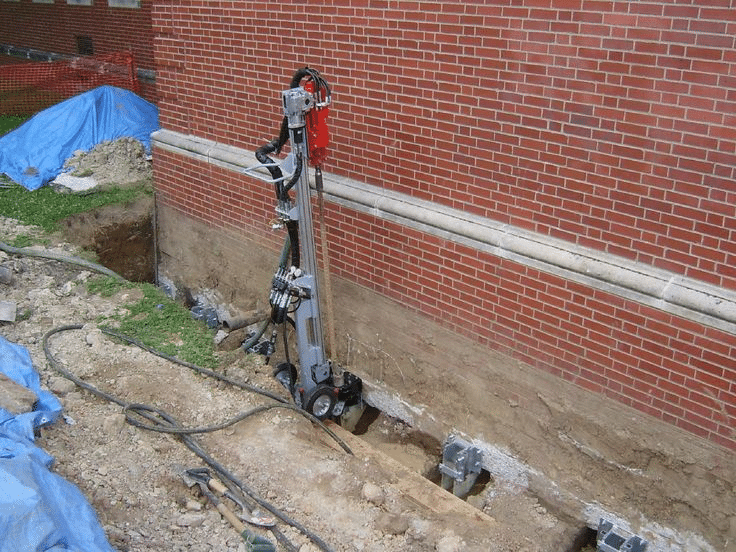Unlocking Home Equity: A Comprehensive Guide on HELOC
Home equity is a significant portion of household wealth in the United States. In 2022, the median net worth value of U.S. household assets with home equity was $176,500, compared to $60,000 without home equity.
Home equity is the difference between the amount owed in a mortgage and a property’s value. This amount is what you own in your home. Over time, it can grow as you make repayments and the property’s value increases.
As home equity grows, many homeowners use it to cover the costs of the following expenditures:
- To finance home remodels or renovations
- To settle outstanding balances
- To cover the expenses of a startup
- To build an emergency fund
You can unlock the perks of your home equity with a home equity line of credit (HELOC).
Understanding HELOC
A HELOC is a revolving credit with variable interest rates, similar to credit cards. This credit allows you to borrow and repay funds as needed within a specific time frame. After the specified period, you’ll repay the borrowed amount in installments.
In this line of credit, your home is a collateral, pledged as security for repayments.
How does it work?
You’ll receive a credit limit based on your available home equity when approved for a HELOC loan. You can use up to 80 percent of your home value—sometimes as much as 85 or 90—depending on the lender, minus the outstanding mortgage balance.
During the draw period, you can withdraw the money through dedicated checks, an online transfer, or a draw debit card. You’ll pay monthly interest, but the funds will replenish as you repay the HELOC. This period often lasts for ten years.
Afterward, you’ll enter the repayment period. You cannot access the funds anymore because you’ll repay the principal and any outstanding interest. Most plans allow borrowers to repay the balance between 10 and 20 years.
HELOC Qualifications
HELOC qualifications vary. However, lenders’ criteria typically include the following requirements:
- Your home equity amount – Lenders often require at least 15 to 20 percent of equity.
- Credit score – Lenders’ minimum credit score requirement is generally mid-600s.
- Debt-to-income ratio (DTI) – Most lenders require a DTI of 43 percent or lower. However, some might approve a DTI of up to 50 percent.
These factors will help lenders determine whether you’re a low- or high-risk borrower.
Tips for Applying for a HELOC
Here are tips to ensure a smooth HELOC application process:
Strengthen your credit
While lenders can accept a mid-600 credit score, aiming for 700 and above can qualify you for the most favorable terms and rates.
So, if your score is 600 or lower, strengthen it by making on-time payments and catching up on past-due debts. You should also review your credit report to correct potential errors. You must do this a few months before you apply for a HELOC.
Estimate the amount you can borrow
To calculate your home equity and DTI, follow the following formulas:
Home equity: Subtract your outstanding mortgage from your home’s current value. If your home is worth $300,000 and you owe $175,000, you have a home equity of $125,000.
DTI ratio: Suppose you earn $6,000 and have recurring bills of $400 for a car, $350 for credit cards, and $1,200 for student loans. Your total monthly debt is $1,950.
So, $1,950 divided by $6,000 is 0.325 (33 percent). This DTI can qualify you for a HELOC. To meet the 43 percent minimum threshold, your debts should not exceed $2,580.
After these calculations, you can use an online home equity calculator to determine your potential interest rates and repayment terms.
Shop for a HELOC lender
Shop for HELOC lenders and compare their offers. Even a slight interest rate difference can save you thousands over time. Moreover, you should check if the lenders charge early closure or annual maintenance fees.
Submit your application
Depending on the lender, you can submit a HELOC application in person, online, or over the phone. Whatever option you choose, you’ll provide your employment information, income, and residence history. At the same time, you must verify your identity and permit lenders to pull your credit reports.
Prepare for a home appraisal
Lenders will order a home appraisal to determine your property’s current value. The appraiser will inspect your home’s worth, which will determine how much equity you have.
Afterward, you might receive a preapproval or an initial decision within days. Otherwise, you’ll have to wait until the underwriting process is done.
Accessing Your HELOC Funds
You can access HELOC funds through checks, online transfers, or a debit card. However, you must also remember the following considerations:
- Potential fees and minimum draw requirements: Some lenders charge transaction fees each time you withdraw funds and may also charge annual maintenance fees.
- Withdrawals: Withdraw only the amount you need to minimize interest charges and their potential impact on your credit score. You should also make on-time payments.
- Principal repayment: You’ll only pay the interest during the draw period. However, some lenders allow principal payments.
- Penalties for early payoff: You may face early termination or cancellation fees if you pay off your entire HELOC or close it early—within the first two or three years after opening or before the payment period.

Advantages of HELOC
HELOC’s most attractive advantages include:
- Flexibility: HELOC is a revolving credit line, so you can withdraw and spend only the necessary amount. This benefit is ideal for funding expenses with unknown costs, such as home remodels or additions. You can also use the money for unforeseen emergencies and long-term recurring bills, such as college tuition.
- Lower rates: Home equity as collateral makes your loan less risky to lenders. Because of this, you can receive lower rates than credit cards and personal loans, which are unsecured.
- Potential tax benefits: You may receive tax deductions if you use the funds for home repairs or remodels.
Drawbacks of HELOC
However, HELOC also has its potential pitfalls.
Overborrowing risks
If you aren’t careful with your withdrawals, you may face expensive payments when it’s time to repay the principal. You can avoid this significant financial stress by only borrowing what you need and creating a repayment plan before your draw period ends.
You may lose your home
Since your home is collateral, you may lose it to foreclosure if you can’t make payments. To avoid this scenario, thoroughly review the lenders’ rates, terms, and penalties before signing an agreement. And if possible, lower your repayment balance by paying the principal during the draw period.
Fees
While HELOCs can be cheaper than other credit types, they may have fees that can inflate the borrowing cost. These fees include closing costs, appraisal, application, and annual fees.
As such, pay attention to these charges when shopping for lenders. Choose one with offers that match your needs and try to negotiate before signing an agreement.
Real estate market sensitivity
Lenders may reduce or freeze your credit during the draw period if property values significantly decline. Although these changes are unlikely, it’s better to have a backup plan if you can’t withdraw the amount your lender initially approved.
What To Do If You’re Unable To Open a HELOC
If your application is denied, consider the following steps:
Request a written explanation or letter of denial
You have the right to ask for a written explanation or letter of denial outlining the reasons for the rejection. This letter clarifies the financial areas you must improve for future applications.
Address the denial reasons
Once you understand the reasons for the denial, rectify the situation. For instance, if the credit score was the factor, focus on improving or correcting report errors. If insufficient or intermittent income is the problem, consider a side hustle.
Reevaluate your property
Sometimes, the fault is in your home. If the appraiser deems it insufficient to secure a HELOC, carefully examine the inspection for mistakes. Check whether they got the square foot wrong or miscounted the number of rooms.
Alternatively, you could get a second appraisal, but the costs can be significant.
Remember that if you’re reapplying to the same lender, you often must wait approximately six months before submitting a new application.
Know Your Priorities
HELOC can offer the affordability and flexibility you need to finance expenses like home repairs and remodels. However, you must thoroughly assess your capability and know your priorities to determine the suitability of this loan option.
Consult with multiple lenders and review all the offers to make a decision that will give you peace of mind and ensure financial security in the long run.







